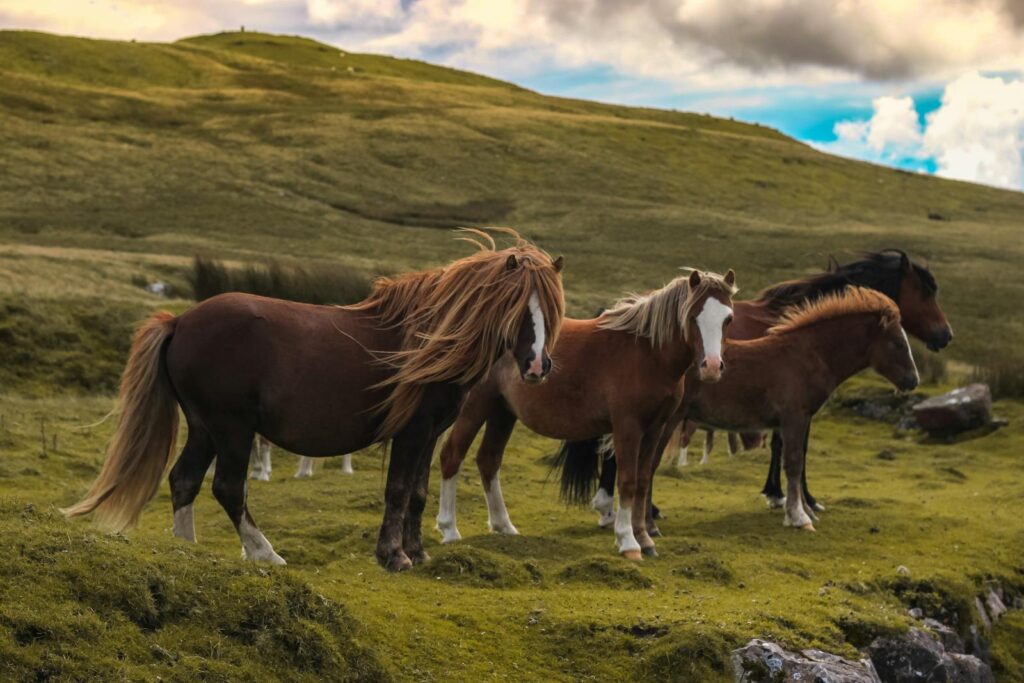Finding the perfect horse companion can be a journey filled with excitement and careful consideration. For many riders, especially beginners, families, or those seeking a peaceful equine partnership, temperament ranks among the most crucial factors. Quiet, level-headed horses with willing dispositions can transform the riding experience from potentially stressful to genuinely enjoyable. This article explores some of the world’s most notably calm and manageable horse breeds, helping prospective owners make informed decisions based on temperament rather than just appearance or popularity. Whether you’re seeking a gentle first mount, a reliable trail companion, or a patient therapy horse, these breeds offer the steady demeanor and cooperative spirit that make horse ownership a joy rather than a challenge.
The American Quarter Horse: America’s Versatile Companion
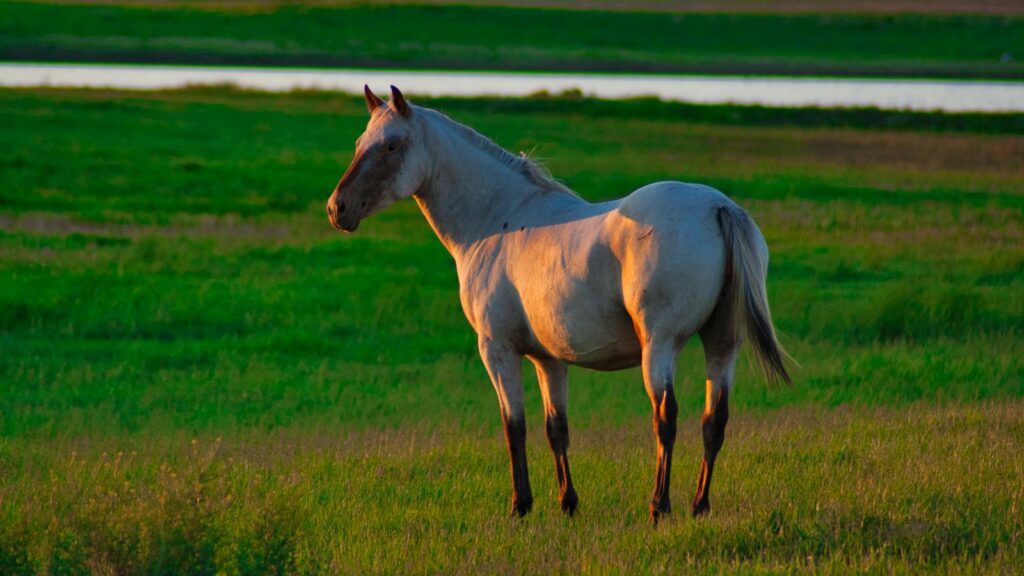
The American Quarter Horse stands as perhaps the quintessential example of a breed combining calm temperament with versatile abilities. Known for their “horse sense,” Quarter Horses typically possess an inherent level-headedness that makes them exceptional choices for riders of all experience levels. Their willing nature and intelligent approach to tasks stem from generations of selective breeding focused on creating dependable working partners for ranch work, where unpredictable behavior couldn’t be tolerated. These horses excel at reading their handlers’ intentions and generally respond with a cooperative attitude rather than resistance. The Quarter Horse’s steady temperament doesn’t come at the expense of personality; they often develop strong bonds with their owners while maintaining their reputation as one of the most trainable and forgiving breeds available.
The Morgan Horse: America’s First Breed
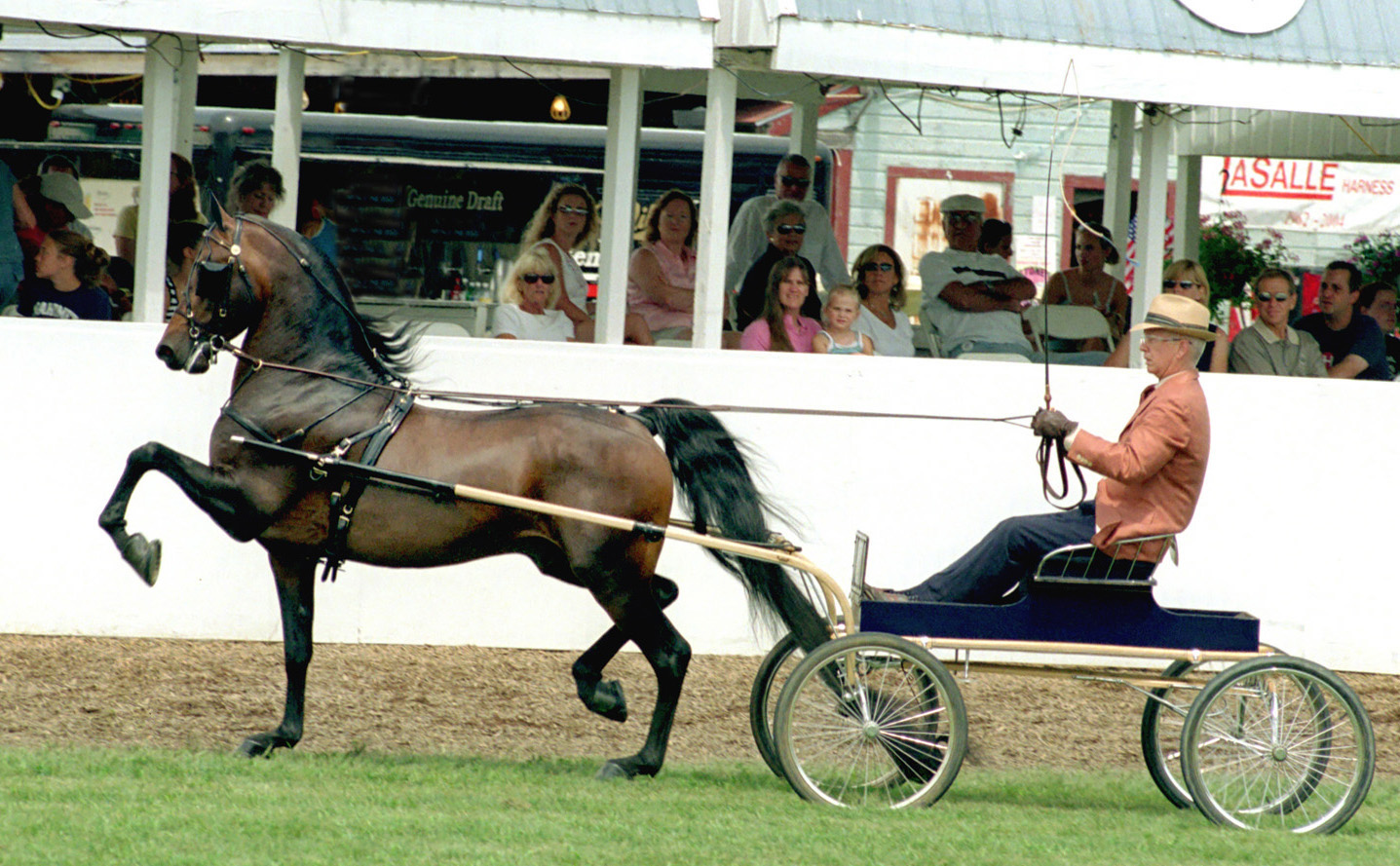
Morgan horses carry a legacy of exceptional temperament dating back to their foundation sire, Figure (later named Justin Morgan), who passed his remarkable disposition to his descendants. These compact, powerful horses are renowned for their eager-to-please attitude and natural affinity for human companionship. Morgans typically approach new tasks with enthusiasm rather than fear, making them excellent horses for riders developing their confidence. Their intelligence allows them to excel in various disciplines while their innate people-oriented nature creates a remarkable partnership quality rarely found in other breeds. Many Morgan owners describe their horses as actively seeking human interaction, often nickering in greeting and demonstrating an unusual degree of loyalty to their handlers. This combination of intelligence, willingness, and genuine affection for people has maintained the Morgan’s popularity for over 200 years.
The Norwegian Fjord: Ancient Breed with a Gentle Soul
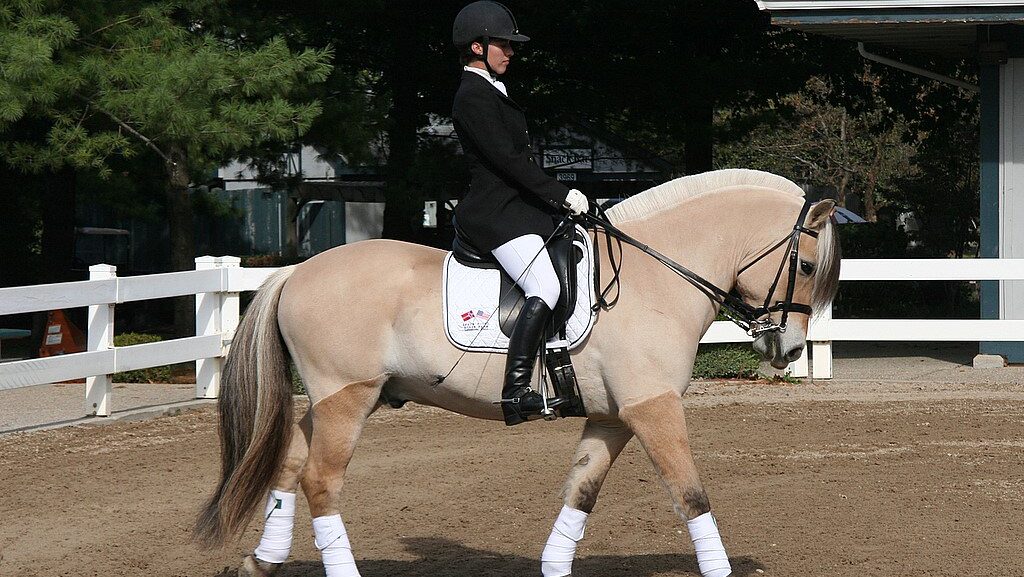
The Norwegian Fjord’s distinctive appearance with its dun coloring and unique dorsal-striped mane is matched by an equally distinctive temperament that has made this ancient breed increasingly popular worldwide. These sturdy, compact horses have been selectively bred for over 4,000 years with a strong emphasis on creating a calm, cooperative nature. Despite their small stature (typically 13-14.2 hands), Fjords possess remarkable strength combined with a level-headed approach to new situations that makes them exceptional family horses. Their natural curiosity tends to override fear reactions, resulting in horses that approach novel objects or situations with interest rather than flight response. The breed’s exceptional balance between forward energy and self-control makes them suitable for everything from children’s mounts to driving, trail riding, and even lower-level dressage.
The Haflinger: Golden Mountain Horse with a Heart to Match
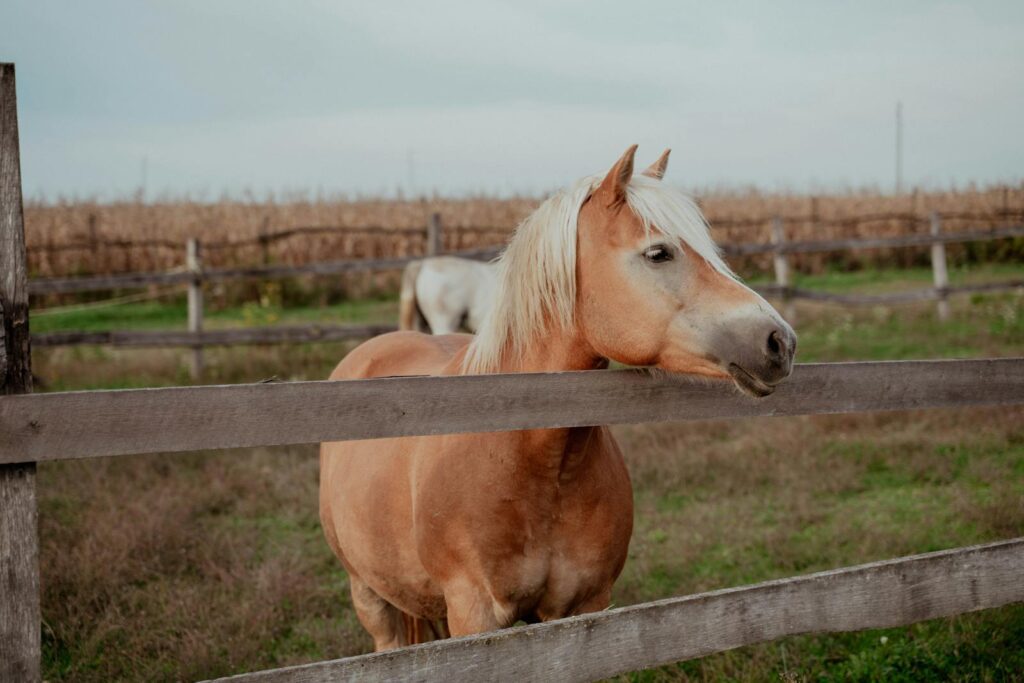
Haflingers, with their distinctive chestnut coloring and flaxen manes and tails, bring a combination of mountain horse sensibility and people-oriented temperament that creates exceptional riding partners. Originating in the mountains of Austria and northern Italy, these horses developed a sure-footed, thoughtful approach to their surroundings that translates to steady reliability under saddle. Despite their relatively small size (typically 13.2-15 hands), Haflingers possess remarkable strength and stamina paired with a willingness that makes them suitable for riders of various sizes and abilities. Their naturally curious and friendly disposition creates horses that actively seek human company without displaying the nervous energy that can make some breeds challenging. Haflingers particularly excel with families, often demonstrating special gentleness with children while maintaining enough spirit to keep experienced riders engaged.
The Irish Draught: Gentle Giants with Working Sensibility
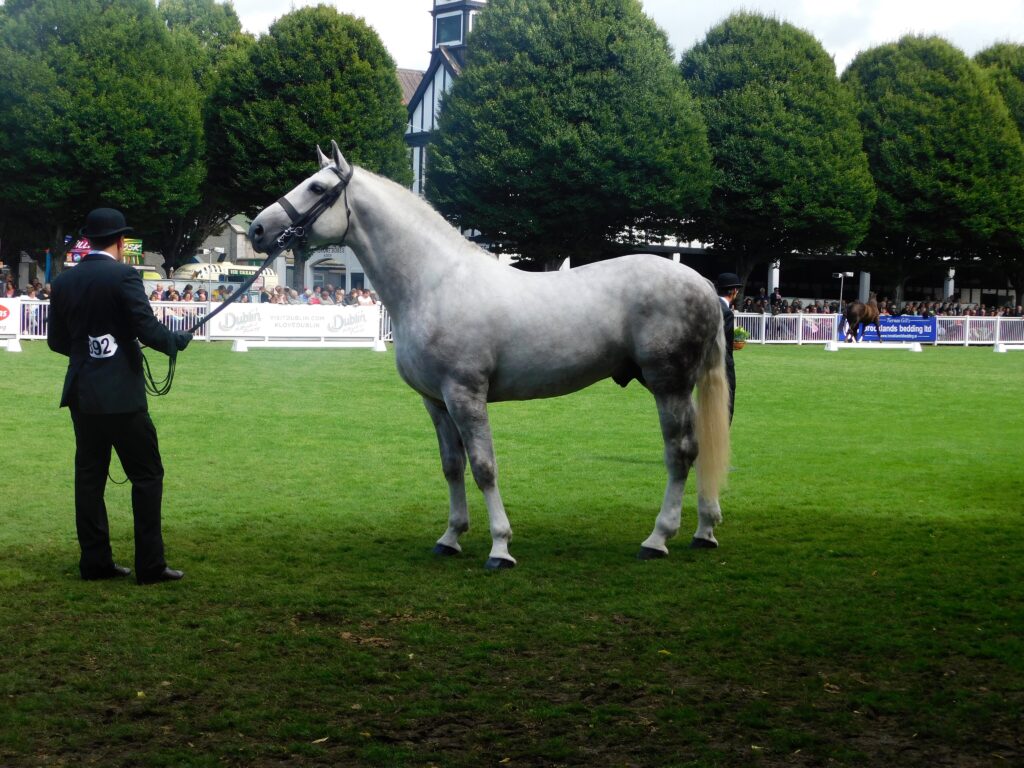
The Irish Draught represents centuries of selective breeding for a horse that combines substantial size and strength with a remarkably gentle, sensible nature. These horses developed as all-purpose farm animals in Ireland, where a calm temperament was essential for working closely with farmers in varied conditions. Modern Irish Draughts typically stand 15.2-16.3 hands with powerful builds, yet they’re renowned for their exceptionally gentle dispositions and willingness to form partnerships with their handlers. Their intelligence manifests not in spirited resistance but in thoughtful problem-solving and a notable ability to remain calm in situations that might spook more reactive breeds. The Irish Draught’s temperament is often described as combining the best aspects of cold-blooded (draft) and hot-blooded (thoroughbred) horses, creating an animal with sufficient energy for athletic pursuits but without excessive reactivity.
The American Paint Horse: Colorful Companions with Quarter Horse Sense
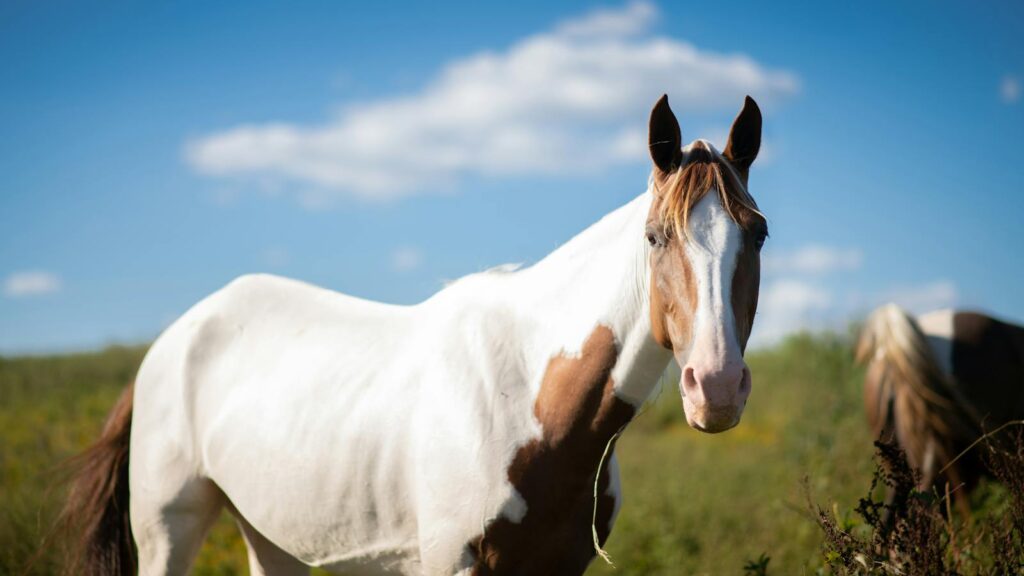
American Paint Horses share much of their genetic background with Quarter Horses, inheriting similar temperament traits while adding their distinctive colorful patterns. These horses typically display the same willing, people-oriented nature that makes Quarter Horses so popular, combined with intelligence that facilitates training across multiple disciplines. Their stock horse heritage creates an inherent steadiness that particularly benefits less experienced riders or those seeking a confidence-building mount. Paint Horses generally possess a good balance between forward energy and self-control, making them versatile enough for disciplines ranging from trail riding to western performance events. Their stable temperaments often translate to horses that can transition smoothly between different riders or handling styles without becoming confused or resistant.
The Icelandic Horse: Viking Mounts with Modern Manners
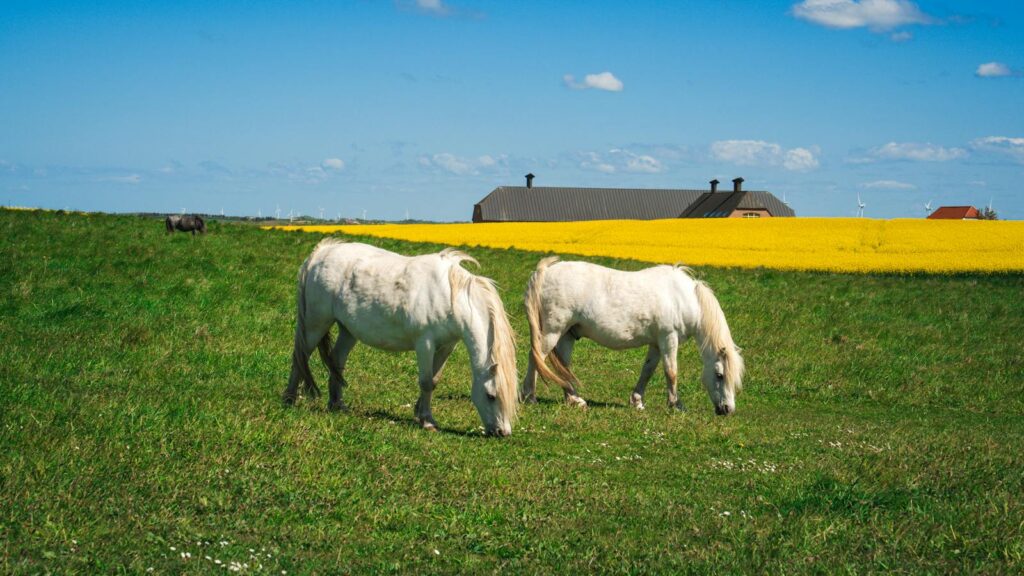
Icelandic horses have developed over a thousand years of isolation in their harsh native environment, creating a breed renowned for its sensible nature and human-focused temperament. Despite their small stature (typically 13-14 hands), these horses carry adults comfortably while maintaining a level-headed approach to their surroundings that inspires confidence in riders. Their natural curiosity tends to overcome fear reactions, resulting in horses that approach new situations with interest rather than anxiety. Icelandic horses are particularly noted for their social intelligence and ability to form strong bonds with their handlers without becoming overly dependent. Their unique gaits, including the smooth tölt and flying pace, come with temperaments that make learning to ride these specialized movements accessible even to novice riders.
The Clydesdale: Gentle Giants with Surprising Sensitivity
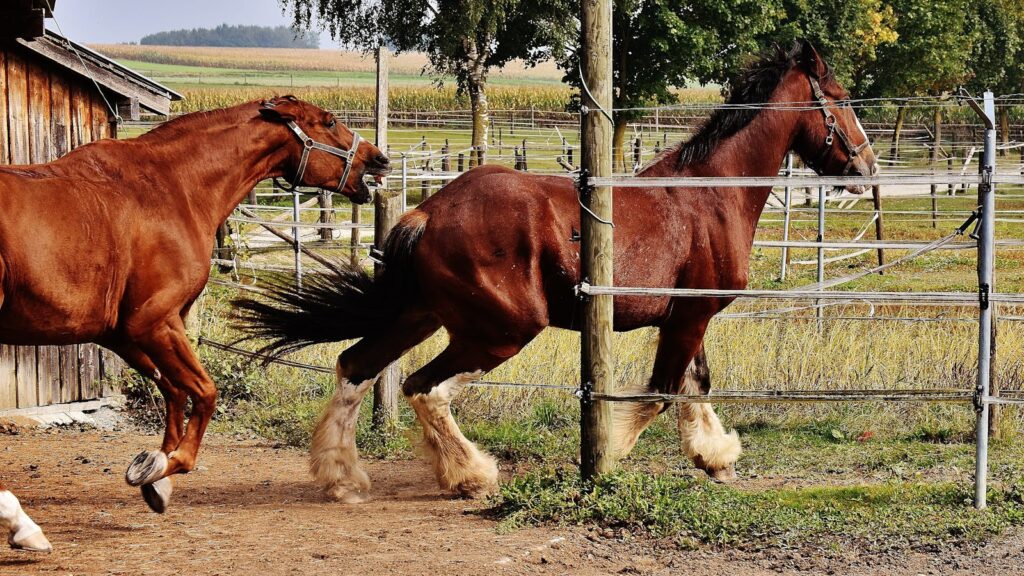
Clydesdales may be best known for their impressive size and feathered legs, but experienced handlers prize them equally for their exceptionally gentle temperaments. Despite their enormous strength and imposing presence (typically standing 16-18 hands), Clydesdales often display a remarkable softness in their interactions with humans. These horses combine the steady reliability typical of draft breeds with an unusual degree of sensitivity that makes them highly responsive to subtle handling cues. Their natural confidence and low reactivity create horses that rarely spook or bolt, making them surprisingly suitable for riders who might be intimidated by their size. Clydesdales typically approach new situations with quiet interest rather than fear, and their patient nature makes them excellent teachers for developing riders despite their large size.
The Appaloosa: Spotted Sensibility
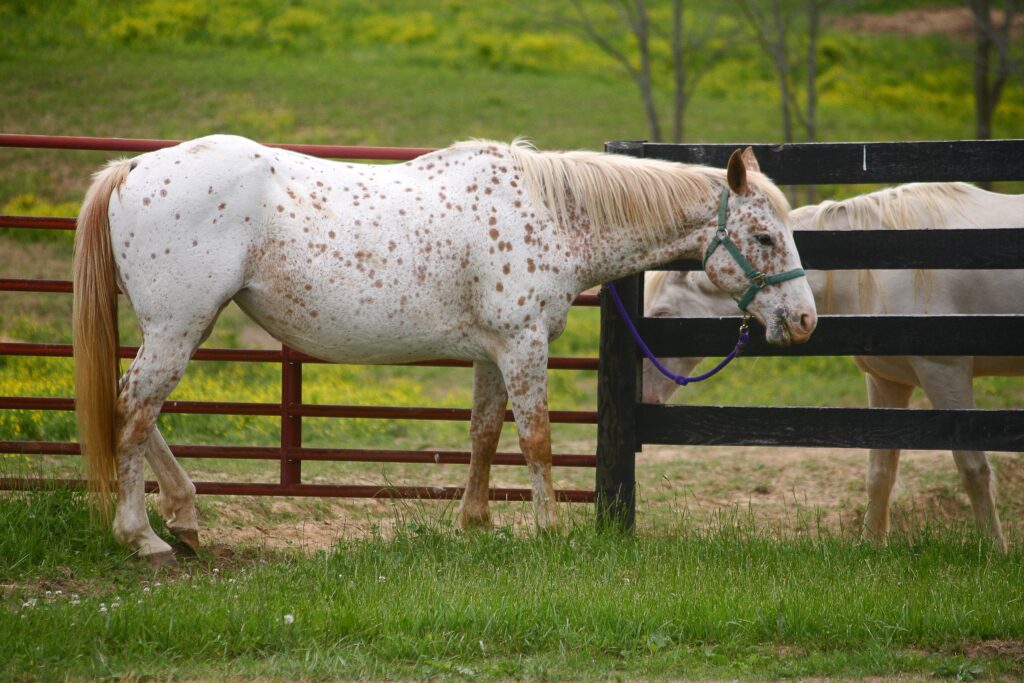
The Appaloosa’s distinctive spotted coat patterns are matched by a temperament that reflects their development as versatile horses for the Nez Perce people, who valued intelligence and trainability. Modern Appaloosas typically display a thoughtful approach to new situations, often demonstrating the curiosity to investigate rather than flee from unfamiliar objects. Their intelligence manifests in a problem-solving nature that, when properly channeled through consistent training, creates remarkably reliable partners. Appaloosas are particularly noted for their ability to form strong bonds with consistent handlers, often becoming exceptionally loyal to their primary person. While they can demonstrate more independence than some breeds, this self-reliance typically translates to level-headedness rather than stubbornness when they’re handled with clear, consistent communication.
The Tennessee Walking Horse: Smooth Gaits, Smooth Temperament
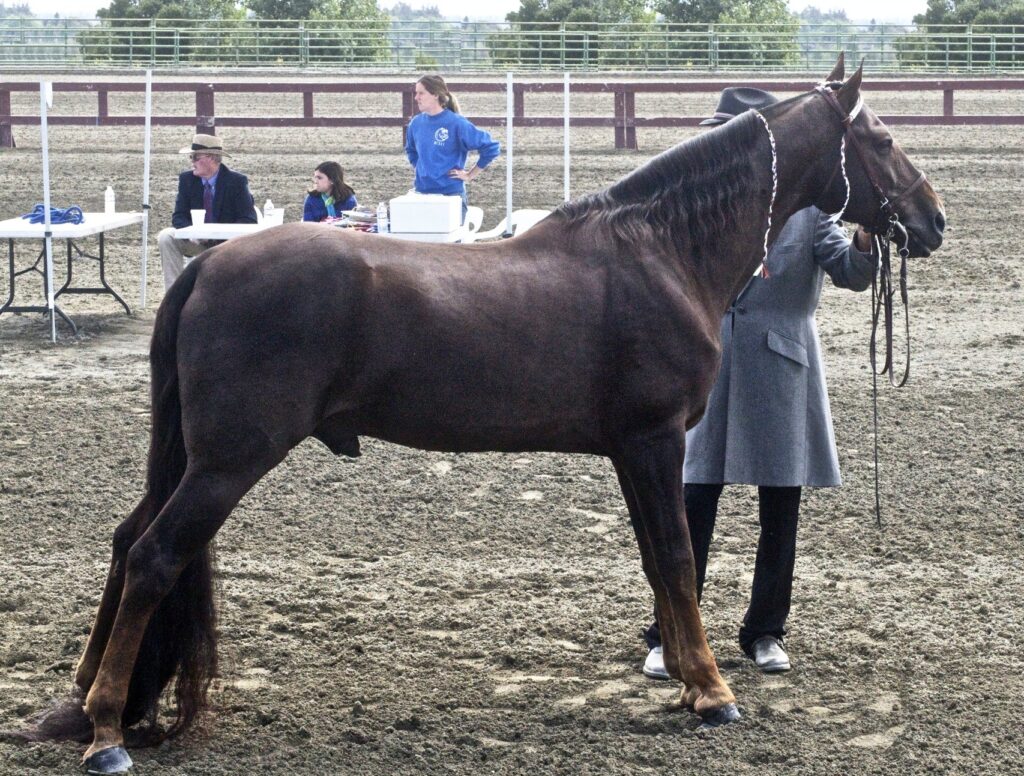
Tennessee Walking Horses have long been bred not just for their famously smooth gaits but also for temperaments suitable for plantation owners who wanted comfortable, reliable mounts. This breeding emphasis created horses that typically combine forward energy with a remarkably level-headed approach to their surroundings. Their natural running walk provides a comfortable riding experience while their generally calm disposition makes them accessible even to less experienced riders. Tennessee Walkers often display a people-oriented nature that creates strong bonds with their handlers, frequently demonstrating affectionate behaviors like nickering at their owner’s approach. Their intelligence typically manifests as a willingness to learn rather than finding creative evasions, making them particularly rewarding for riders seeking a harmonious partnership.
The Percheron: From Battlefield to Family Friend
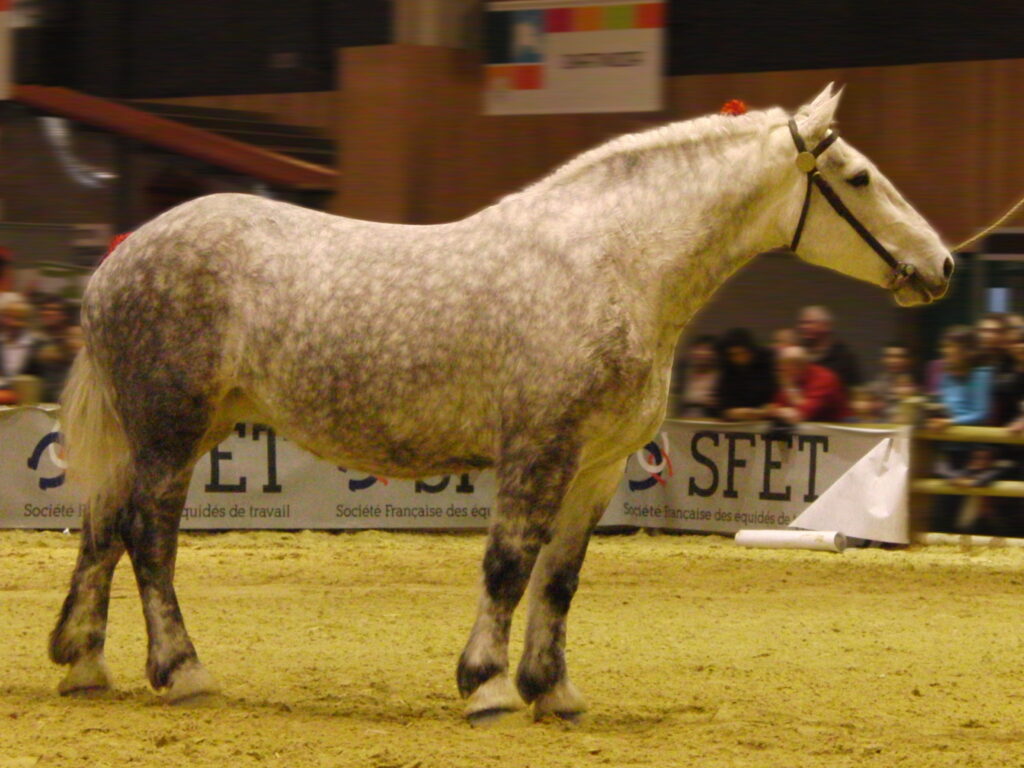
Percherons have made a remarkable transition from their origins as medieval war horses to become known for their exceptionally docile nature despite their imposing size. Standing typically between 16-18 hands with powerful builds, these horses nevertheless display a gentleness that makes them accessible even to novice handlers with proper instruction. Their calm temperament comes with sufficient intelligence to learn complex tasks, making them versatile performers in everything from driving to riding disciplines. Percherons generally approach new situations with quiet confidence rather than fear or anxiety, making them reliable partners in varied environments. Their patient nature makes them particularly valuable for therapeutic riding programs, where their combination of steady temperament and impressive presence creates both physical and emotional benefits for participants.
The Gypsy Vanner: Flashy Appearance with a Gentle Heart
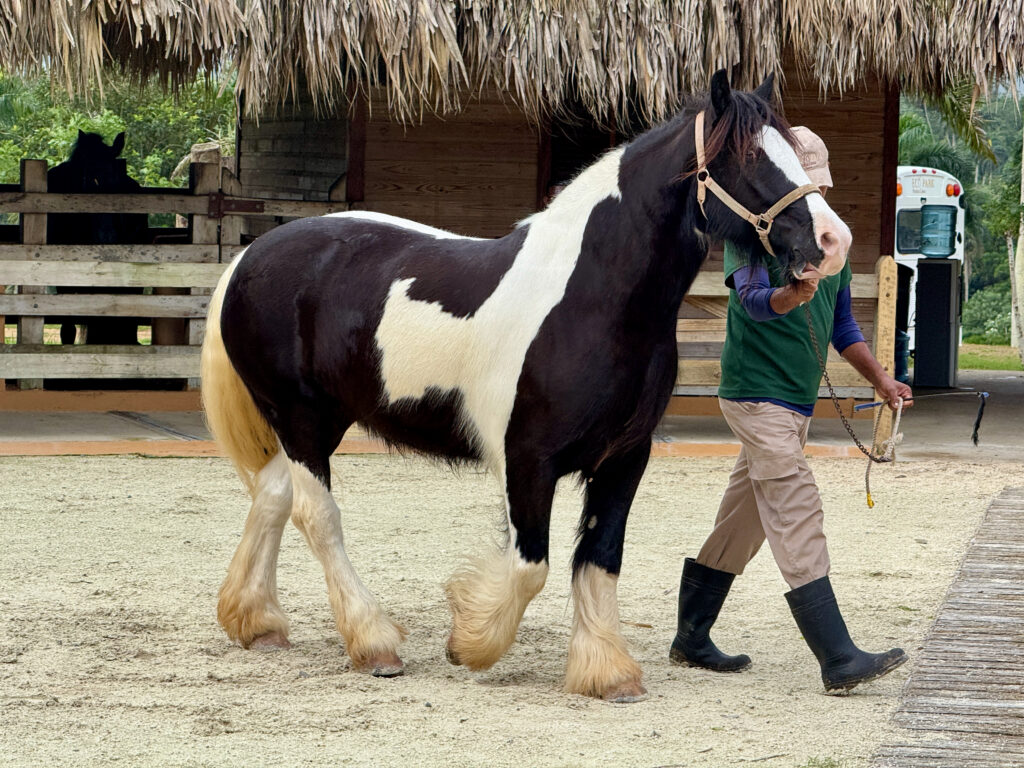
Gypsy Vanners were developed by the Romani people specifically as family horses that could safely be handled by children while still performing essential tasks pulling traditional vardos (wagons). This specialized breeding created horses that combine the strength of draft breeds with exceptionally gentle, people-oriented temperaments. Their striking feathering and often dramatic piebald or skewbald coloring comes with personalities that typically demonstrate remarkable patience and willingness to please. Gypsy Vanners generally display a calm curiosity about their surroundings rather than the reactivity found in some more high-strung breeds. Their intelligence typically manifests in quick learning rather than testing boundaries, creating horses that respond well to consistent, kind handling while forming strong bonds with their regular handlers.
Temperament Considerations Beyond Breed
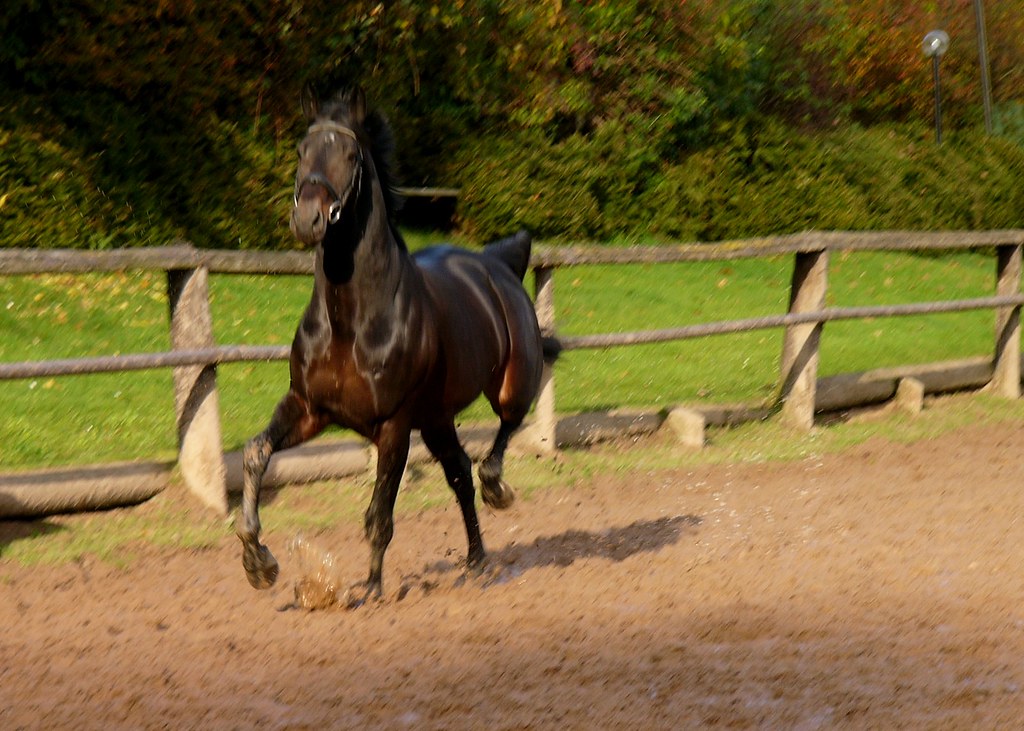
While breed tendencies provide useful guidelines for temperament expectations, individual variation exists within every breed that can significantly impact a horse’s handling ease. Factors including early handling, consistent training methods, and general life experiences shape a horse’s behavior regardless of breed predispositions. Additionally, proper matching of horse energy level to rider expectations remains crucial for successful partnerships, as even the calmest breed can seem challenging to a very timid handler, while particularly quiet individuals of normally energetic breeds might perfectly suit certain riders. Professional assessment from a trainer familiar with different breed characteristics can prove invaluable when selecting a horse based primarily on temperament needs. The relationship between horse and handler ultimately depends on consistent, clear communication that builds trust regardless of the breed’s typical temperament tendencies.
In conclusion, while no horse can be guaranteed perfectly quiet or easy to handle based solely on breed, these twelve types represent those most consistently praised for their level-headed, cooperative natures. The ideal temperament for any rider depends on individual preferences, experience level, and intended use – what feels comfortably forward to one person might seem intimidatingly energetic to another. When seeking a quiet, manageable equine partner, consider starting with these breeds known for their steady dispositions, but always evaluate each horse as an individual through multiple interactions before making a commitment. With thoughtful selection and consistent, kind handling, these breeds offer the best foundation for the rewarding, harmonious horse-human partnerships that make equestrian pursuits so deeply satisfying.

